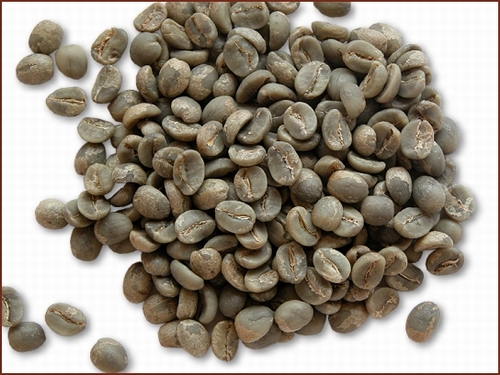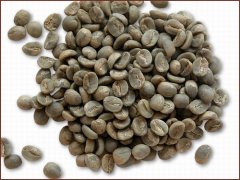Boutique coffee learns how to choose raw coffee beans

What kind of raw beans are high-quality raw beans? First look at the surface of beans, fresh and high-quality raw beans, the surface is shiny, in addition, the processing of good raw beans, uniform color, the surface of uneven color can not be called good beans, must choose uniform color. Secondly, the particle size is the same, which is also evidence of good quality management. Make sure that the particle size is the same when you buy it. Even and neat coffee raw beans can achieve a consistent baking effect; otherwise, some are too deep and bitter, and some are too shallow and sour, which will affect the overall taste of roasted coffee beans.
In terms of variety, not all Arabica beans are selected coffee, only a few high-end beans come from high mountain areas, or after strict selection and classification, they are considered selected coffee because of their hard texture, rich taste and excellent flavor. It only accounts for about 10% of the world's coffee production. As for Robusta beans, all of them have entered the commercial coffee market, and only a few fine beans can be regarded as selected coffee.
From the perspective of coffee treatment: due to the different ripening time of coffee fruit, good coffee must be harvested by hand in 3 to 6 times, and care must be taken in the process of processing, whether it is tanning or washing. The raw coffee beans also have to go through strict selection and classification to ensure the stability of their quality. Although some areas have good local conditions and can produce excellent coffee, they cannot be classified as selected coffee if they are not handled properly or are just leftover inferior products. The American selected Coffee Association has published a selected coffee classification map (Green Coffee Classification Chart), which clearly and fully defines flawless raw beans and coffee with special flavor as selections. The selection of coffee is absolutely special, far exceeding the level that tastes good.
From the perspective of roasting mode, there is a close relationship between the year, type, room temperature, moisture content and baking temperature of raw beans. Generally speaking, the selection of coffee usually uses a small amount of roasting (Small Batch), which must be strictly tested and analyzed in advance, and then be looked after by the roaster until it is in the best condition before it can be stopped. To ensure that the coffee beans can be evenly ripe inside and outside, can ensure the perfect quality.
Select coffee in terms of freshness: fresh coffee is selected coffee, which refers to the freshness of roasted beans, not the freshness of raw beans after harvest. After roasting, the flavor of coffee beans reaches its peak in about 1-7 days, which is the best time to drink; once stored for too long, the coffee will naturally decay and suffer oxidation, and the flavor will not be as good as it used to be.
From the way coffee is sold: it is important that beans are fresh and the roasting date should be kept within 7 days in order to make a good coffee. In contrast, commercial coffee uses iron cans, glass cans or plastic bags to pack poor coffee beans, coffee powder, or instant coffee.
From the trade name of coffee: good coffee has its own characteristics, not willing to be anonymous only called coffee. Therefore, in order to highlight a variety of unique styles, good coffee has its own names, such as Blue Mountain in Jamaica, Yirgacheff in Ethiopia, Sulawesi in Indonesia, Antiqua in Guatemala, Kona in Hawaii and so on. There is also a rating as part of the name, such as: Kenya AA (AA is the highest grade in the local classification system).
Important Notice :
前街咖啡 FrontStreet Coffee has moved to new addredd:
FrontStreet Coffee Address: 315,Donghua East Road,GuangZhou
Tel:020 38364473
- Prev

Boutique coffee learns how to choose raw coffee beans
What kind of raw beans are high-quality raw beans? First look at the surface of beans, fresh and high-quality raw beans, the surface is shiny, in addition, the processing of good raw beans, uniform color, the surface of uneven color can not be called good beans, must choose uniform color. Secondly, the particle size is the same, which is also evidence of good quality management. Make sure that the particle size is the same when you buy it.
- Next

A Cup Test method for evaluating Coffee quality by basic Common sense of Fine Coffee
How do coffee merchants taste a large number of coffee samples in a short period of time? That is the so-called cup method (cupping). On the other hand, the three main criteria for evaluating the quality of the cup test are Aroma, Body and Flavor. In the traditional cup test process, it is easy to drink coffee powder, so it requires practice and experience, the cup test method is roughly as follows:
Related
- What is the meaning of lactic acid fermentation with coffee bean treatment?
- How to judge the state of foam by sound?
- How does the latte pull out the unicorn pattern? Come to get for a little trick to improve the flower pull!
- Will flower pulling affect the taste of the latte?
- Do you know the history of coffee?
- The difference between honey treatment and sun washing what is raisin honey treatment?
- What kind of milk can a novice use to make coffee foam to keep the foam longer? The correct method and skills of milking tutorial sharing
- Why do washed coffee beans taste sour? Flavor characteristics of washed Coffee
- Introduction to the skill of how to practice the size and height of water injection around the circle of hand-brewed coffee
- How do beginners practice coffee flower drawing from scratch?

